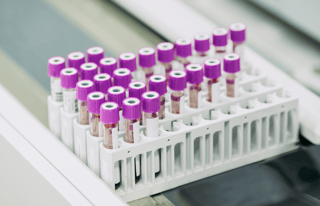
- Applications
-
Products
-
Liquid Handling
- firefly Accelerate genomic research with innovative all-in-one, compact liquid handling
- mosquito Nanolitre liquid handling technology performs ‘traditional’ tasks at a fraction of the volume, and higher speeds
- dragonfly Delivers accurate and repeatable nanolitre to milliliter dispensing
- apricot Automated liquid handling instrumentation for convenient general use across your entire team
- Sample Preparation
-
Sample Management
- comPOUND A scalable, reliable, and secure compound management solution
- BioMicroLab Easy-to-use sample management automation instruments
- arktic Robust biospecimen storage and management down to -80°C
- lab2lab Novel sample and data transfer network system
- comPACT Reliable and efficient -20°C storage and retrieval has never been more accessible
-
Liquid Handling
-
About
- Company With a focus on liquid handling, sample preparation and sample management, our expert teams create state-of-the-art solutions that scientists and researchers can trust Culture We have one overarching mission: to work together to accelerate life science research. Through our innovative solutions and state-of-the-art tools, we believe we can make a real difference to human health Innovation From the initial prototype through to manufacturing, installation and beyond, we bring a problem-solving mindset and technical expertise to drive innovation Board Members Our Board of Directors are committed to driving the long-term success and sustainability of SPT Labtech, providing expert guidance and oversight to execute the company’s ambitious commercial strategy.
-
Positive displacement technology
.jpg) Novel positive displacement dispensing technology from disposable tips underpins our liquid handling portfolio of products
Learn more
Novel positive displacement dispensing technology from disposable tips underpins our liquid handling portfolio of products
Learn more 
-
View all
 Pneumatic tube transport
Pneumatic tube transport
.jpg) Harnessing the power of pneumatic technology, our innovative sample transport solutions deliver quickly and reliably between labs, analytical suites and even across sites hundreds of meters apart
Learn more
Harnessing the power of pneumatic technology, our innovative sample transport solutions deliver quickly and reliably between labs, analytical suites and even across sites hundreds of meters apart
Learn more 
-
Knowledge Base
- Events & Webinars Meet the SPT team at events all over the globe and virtually via our webinars Blog Our latest blog posts feature trends in research, innovative techniques and new technology Resources Our wide range of insightful resources include videos, whitepapers, eBooks, application notes and more News Latest news from SPT Labtech globally
-
23 April, 2024
 SPT Labtech supports life sciences startup growth by joining forces with BioLabs
Continue reading
SPT Labtech supports life sciences startup growth by joining forces with BioLabs
Continue reading 
-
11 April, 2024
 SPT Labtech Appoints Rob Walton as New Chief Executive Officer
Continue reading
SPT Labtech Appoints Rob Walton as New Chief Executive Officer
Continue reading 
-
27 March, 2024
 5 ways to mitigate biological sample integrity loss
Continue reading
5 ways to mitigate biological sample integrity loss
Continue reading 
10
- Careers
Reviewing automated liquid handler options to find your lab’s solution. The guide part 2
10/06/2019







